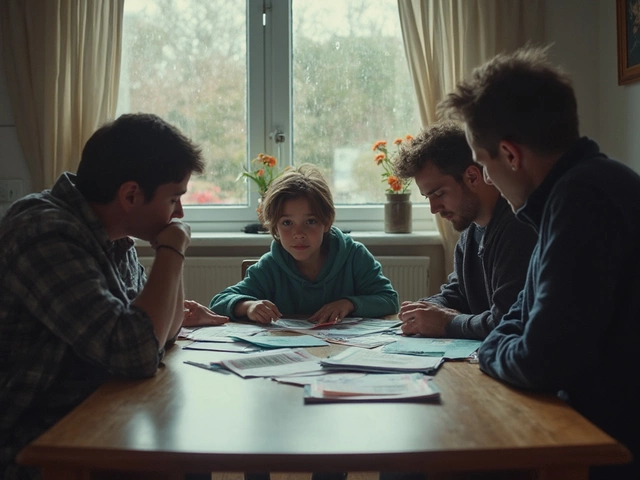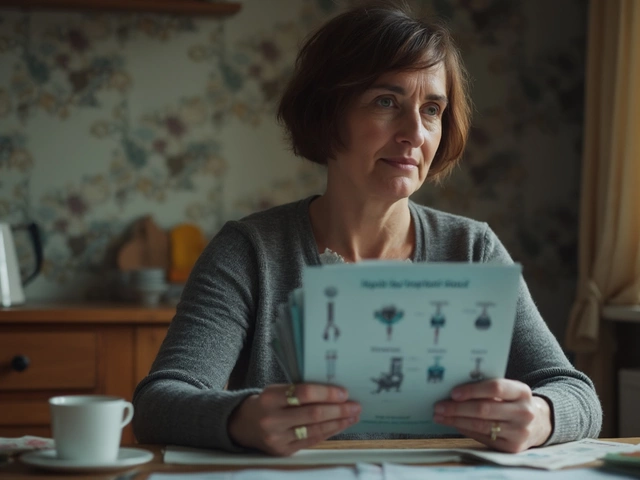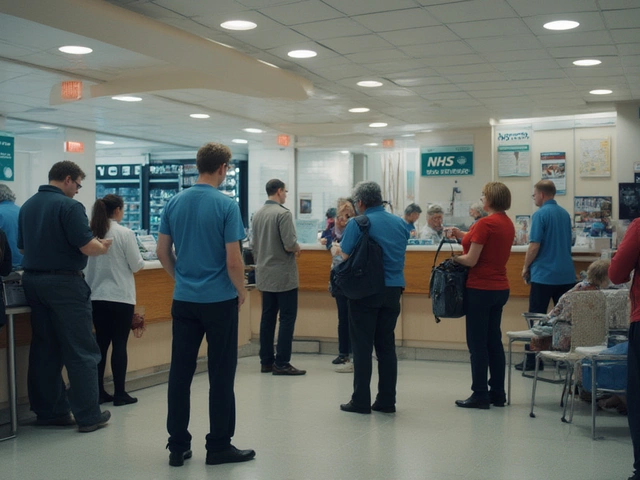Graded Exposure Tracker
The article explains that graded exposure is one of the most effective ways to retrain your nervous system. Start with small movements, gradually increase activity, and stay within a 3-5/10 pain scale. This tool helps you track your progress daily.
Track your movement and pain response over time
Staying within the 3-5/10 range shows your nervous system is learning movement isn't threatening.
Your consistent activity level is helping retrain your nervous system. Keep going!
Chronic pain doesn’t disappear with a pill. It doesn’t vanish after a few weeks of rest. For millions, it’s a constant companion-aching joints, burning nerves, stabbing back pain that won’t quit. You’ve tried medications, physical therapy, maybe even surgery. And yet, here you are, still hurting. The question isn’t just can chronic pain be overcome? It’s: how do you actually do it?
Chronic pain isn’t broken hardware-it’s a misfiring system
Most people think of pain like a broken light switch: flip it off, and the light goes out. But chronic pain isn’t a signal that something’s damaged. It’s the system itself that’s stuck in alarm mode. Your nerves keep sending danger signals even when there’s no injury left to heal. This isn’t weakness. It’s biology. A 2023 study in The Lancet showed that over 20% of adults in Australia live with chronic pain lasting more than three months. Many of them were told it was "all in their head"-but it’s not. It’s the brain and nervous system that learned to hurt, even when they shouldn’t.
That’s why pushing through pain or hoping it’ll go away on its own rarely works. You’re not fighting the pain-you’re fighting your own nervous system. And that requires a different strategy.
Overcoming chronic pain starts with rewiring, not just reducing
There’s no magic cure. But there are proven ways to retrain your brain’s pain response. The goal isn’t to eliminate every twinge-it’s to reduce its grip on your life. Think of it like turning down the volume on a loud speaker, not unplugging it.
One of the most effective tools is graded exposure. This isn’t about doing more. It’s about doing slightly more-regularly, safely. If sitting for 10 minutes causes pain, you start with 7. Next week, 8. Then 9. You’re not trying to be pain-free-you’re teaching your nervous system that movement isn’t a threat. A 2024 trial in Sydney showed that people using graded exposure improved daily function by 65% in six months, even when pain levels didn’t drop dramatically.
Another key player is mindfulness-based stress reduction (MBSR). It sounds simple: pay attention to the present moment without judgment. But when you practice it daily, it changes how your brain processes pain signals. A 2022 meta-analysis of 37 studies found MBSR reduced pain intensity by an average of 30% and improved quality of life more than opioids or NSAIDs in long-term users.
What actually works? Evidence-backed strategies, not hype
Let’s cut through the noise. Here’s what science says actually helps people regain control:
- Physical activity tailored to your capacity-walking, swimming, cycling. Not gym bro workouts. Just consistent, low-impact movement. Even 20 minutes a day rebuilds muscle, improves circulation, and calms the nervous system.
- Cognitive behavioral therapy (CBT) for pain-not just for depression. CBT helps you spot thoughts like "I’ll never get better" and replace them with "I’m learning to manage this." It’s not positive thinking. It’s practical thinking.
- Sleep hygiene-poor sleep amplifies pain signals. No caffeine after 2 PM. No screens an hour before bed. Keep your room cool and dark. Fixing sleep often cuts pain by 20-40%.
- Heat and cold therapy-simple, cheap, and effective. A heating pad on your lower back for 20 minutes can relax tight muscles. Ice on a swollen joint reduces inflammation. Use them as tools, not crutches.
- Connecting with others-isolation makes pain worse. Joining a support group, even online, reduces feelings of helplessness. People who talk about their pain with others report lower pain scores than those who suffer in silence.
What doesn’t work? Long-term opioid use. Opioids might dull the sensation, but they make your nervous system more sensitive over time. The CDC stopped recommending them for chronic non-cancer pain in 2022. And while supplements like turmeric or CBD get buzz, the evidence is weak. Don’t waste money on unproven fixes.

Medications have a role-but they’re not the solution
Some meds help, but only as part of a bigger plan. Antidepressants like duloxetine or amitriptyline aren’t for depression here-they work on nerve pain pathways. Gabapentin can calm overactive nerves. Topical lidocaine patches help localized pain. But none of these fix the root issue: your brain’s pain alarm.
Use them as temporary support, not a lifelong crutch. Work with a pain specialist who understands multimodal treatment. Avoid doctors who push pills as the only answer. Your goal isn’t to be pain-free-it’s to be functional again.
The mindset shift that changes everything
The biggest barrier to recovery isn’t the pain. It’s the belief that you’re broken. That you’ve failed because you haven’t "gotten over it." But chronic pain isn’t a failure. It’s a condition. And like diabetes or asthma, it’s managed, not cured.
People who overcome chronic pain don’t do it by being tough. They do it by being smart. They stop fighting their body. They stop waiting for a miracle. They start making small, daily choices that add up: a walk, a breathing exercise, a good night’s sleep, a conversation with someone who gets it.
Recovery isn’t linear. Some days are worse. That’s normal. Progress isn’t measured in pain-free days. It’s measured in moments you got to enjoy: playing with your grandchild, cooking dinner, sitting outside without bracing for pain.

When to seek professional help
You don’t have to do this alone. See a pain specialist if:
- Your pain has lasted longer than 3 months
- Medications aren’t helping-or are making things worse
- You’ve stopped doing things you love because of pain
- You feel hopeless, anxious, or depressed about your condition
A good pain clinic doesn’t just prescribe pills. They offer physical therapy, psychological support, movement coaching, and education. In Australia, Medicare covers some of these services under a Chronic Disease Management plan. Ask your GP for a referral.
Real stories, real progress
Janine, 58, from Newcastle, had lower back pain for seven years. She couldn’t bend to tie her shoes. After trying injections and painkillers, she joined a 12-week pain management program. She started with 5-minute walks. Then 10. Then 15. She learned breathing techniques. She stopped blaming herself. Today, she gardens, walks her dog, and sleeps through the night. Her pain hasn’t vanished-but it doesn’t control her anymore.
Mark, 42, a teacher from Brisbane, had nerve pain after a car accident. He was told he’d never return to work. He started CBT and swimming three times a week. He tracked his mood and pain daily. Within eight months, he was back in the classroom. "I didn’t beat the pain," he says. "I learned to live with it without letting it live in me."
These aren’t miracles. They’re results of consistent, smart action.
You can rebuild your life-even with chronic pain
Chronic pain doesn’t have to be your whole story. You can still have joy, purpose, connection. You can still move, laugh, and live. It won’t happen overnight. It won’t happen with one treatment. But it can happen-with the right tools, the right support, and the right mindset.
You’re not broken. You’re adapting. And adaptation is strength.
Can chronic pain ever go away completely?
For some people, yes-but it’s rare. Most people don’t eliminate pain entirely. Instead, they reduce its impact so it no longer controls their life. The goal isn’t zero pain. It’s enough function, enough comfort, enough peace to live well.
Is exercise safe if it hurts?
Yes-but only if it’s done right. Pain during movement doesn’t mean damage. Think of it as "discomfort" rather than "harm." Stay within a 3-5/10 pain scale. If pain spikes above that or lasts more than an hour after activity, you’ve pushed too far. Slow, steady progress beats all-or-nothing effort.
How long does it take to see results from pain management?
Most people notice small improvements in 4-8 weeks. Meaningful changes in function and quality of life usually take 3-6 months. This isn’t a quick fix. It’s a lifestyle shift. The longer you’ve had pain, the longer it takes to retrain your system. Be patient. Consistency matters more than intensity.
Can mental health therapy really help physical pain?
Absolutely. The brain and body are connected. Stress, fear, and anxiety turn up the volume on pain signals. CBT and mindfulness don’t ignore the pain-they help you change how your brain responds to it. Studies show these therapies work better than opioids for long-term pain control.
What’s the biggest mistake people make when dealing with chronic pain?
Waiting for a cure instead of managing the condition. People spend years chasing one magic treatment-another injection, a new supplement, a miracle surgery-while ignoring daily habits that actually build resilience. The truth? Recovery comes from small, repeated actions, not one big fix.





